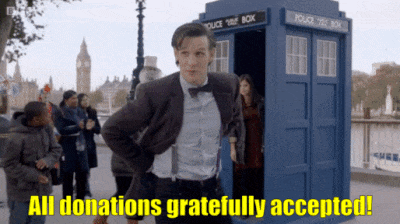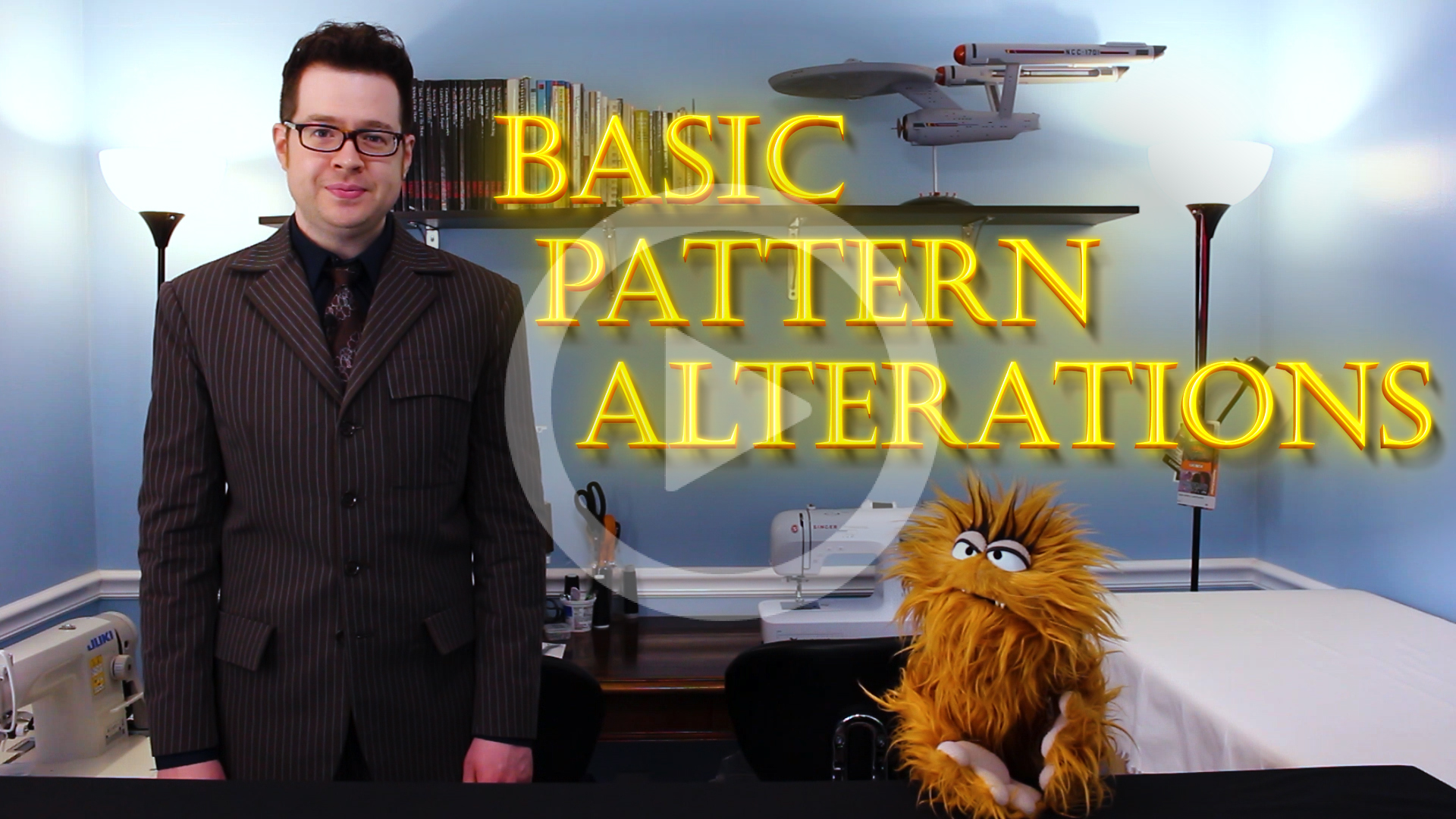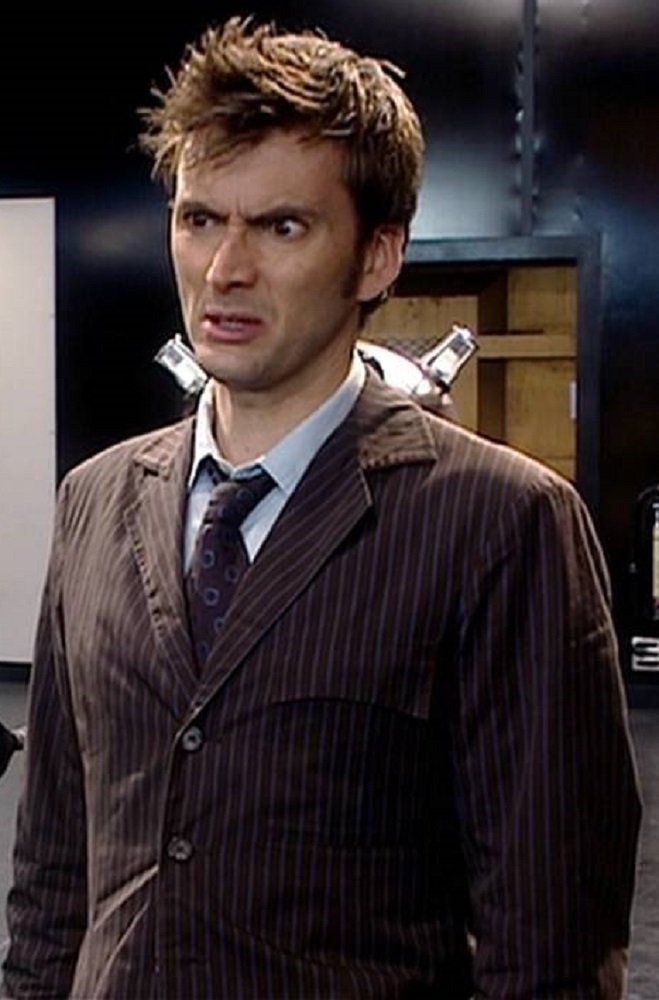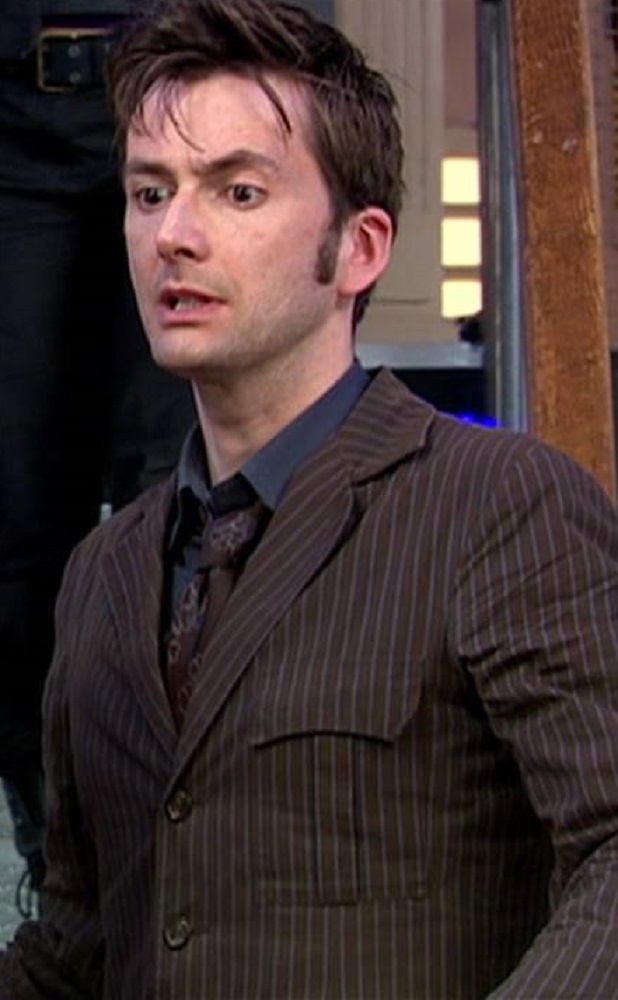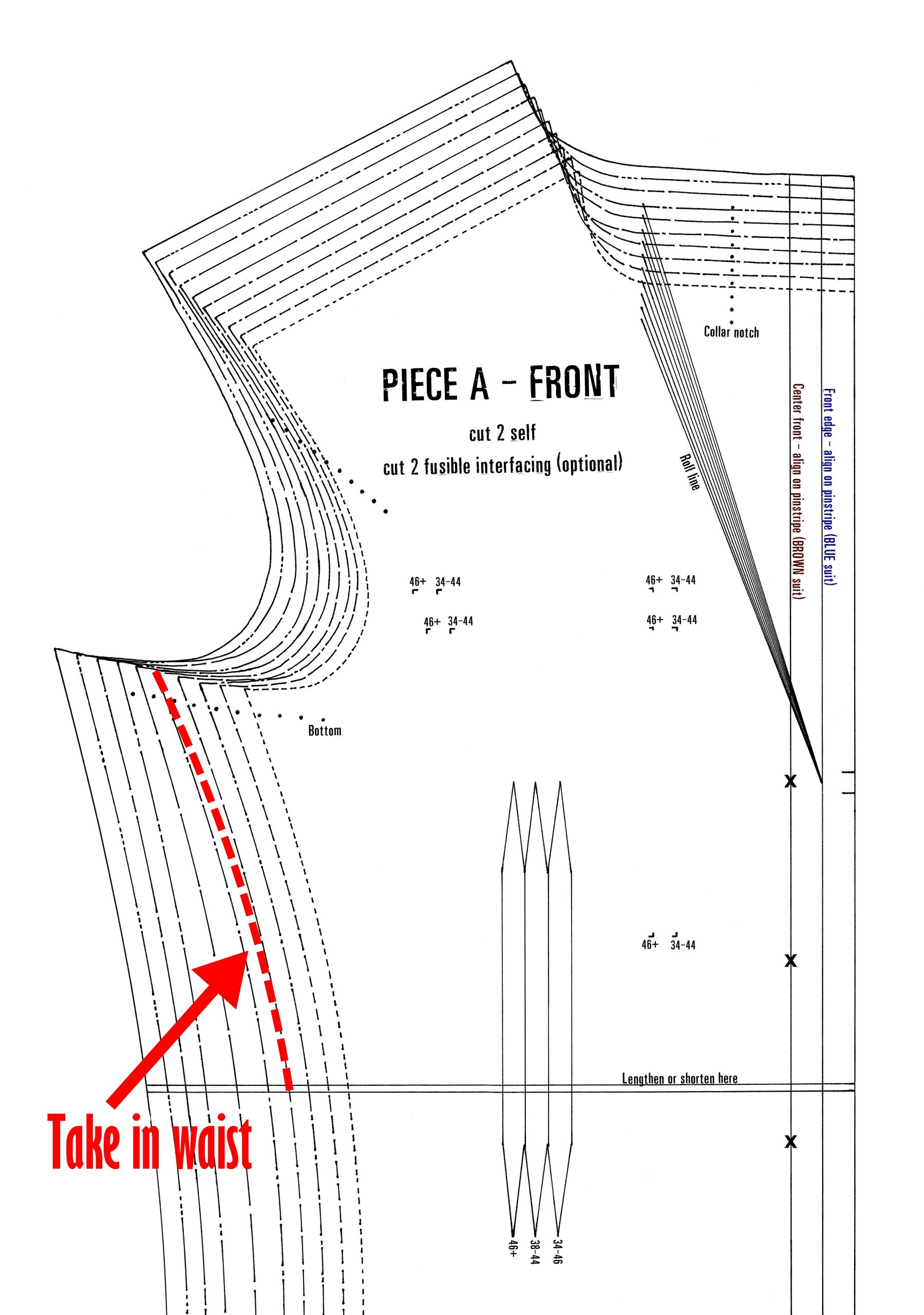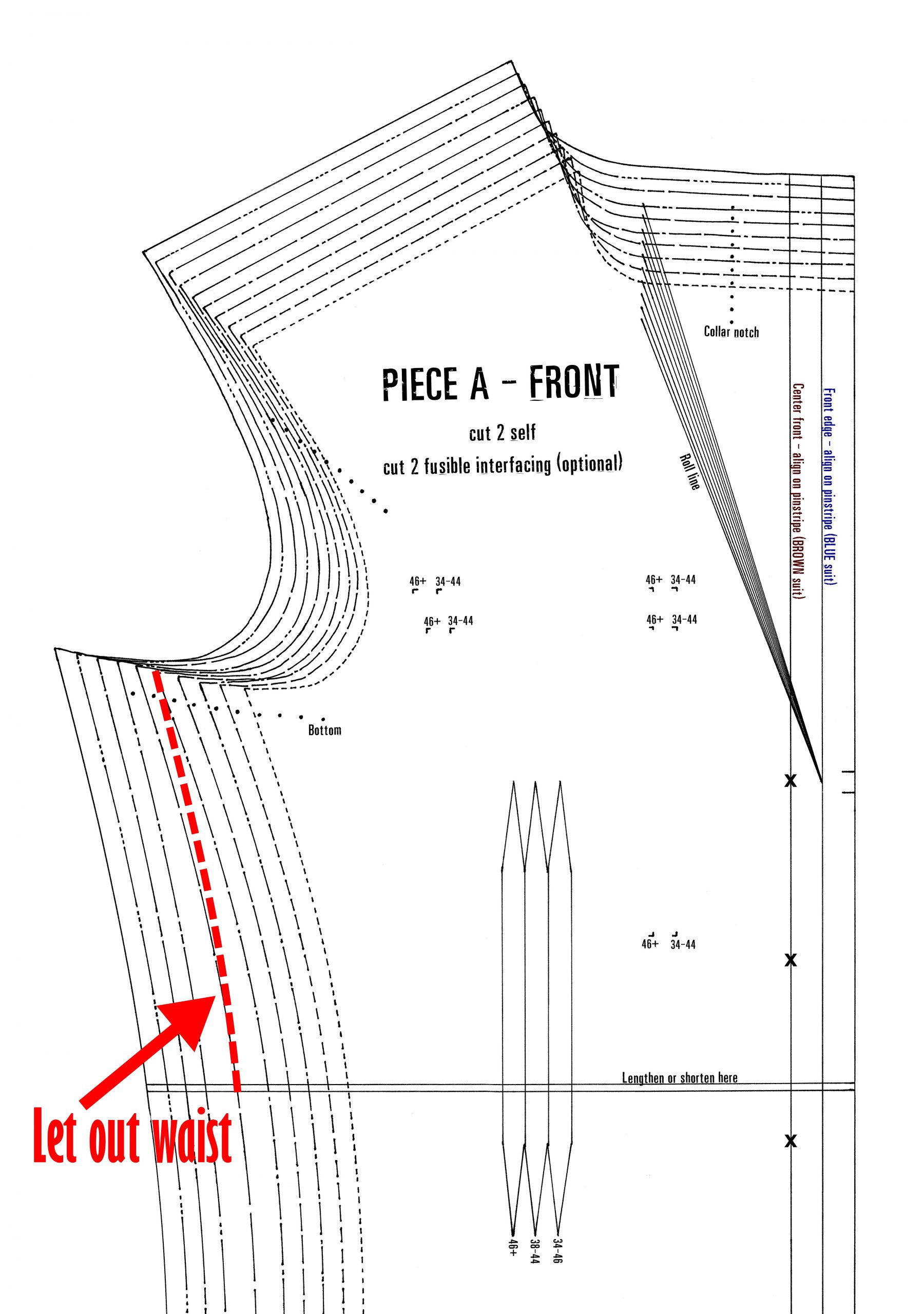As you’re aware, my Tailors Gone Wild 10th Doctor suit sewing pattern includes ten graded sizing options, and ideally, one of them should be a perfect match to your body measurements.
However, while some costumers may find a perfect fit in one of the “default” pattern sizes (and I sincerely hope you do!), it is somewhat unlikely due to variations in height, weight, build, posture, musculature, and general physique.
Basically, people come in all shapes and sizes, and it’s impossible to make a pattern for something that will perfectly fit everyone – hence this portion of the tutorial, in which I’ll provide you with some fitting tips!
You may also find this free sewing lesson helpful, in which I discuss the two most common fitting issues and how to adjust for them. 🙂
Entire books have been written on the subject of pattern altering, fitting issues, and garment alterations, so I’ll only cover some of the most common fitting issues and how to adjust your sewing pattern for them if needed, starting at the top of the body.
Of course, before attempting to correct any apparent fitting issues, one should have in mind what actually constitutes a “good fit!”
In this case, 10’s suits were (again) unconventional in that the jackets were tighter than typical suit jackets.
Despite Tennant’s slim frame, the lack of typical wearing ease was particularly noticeable whenever he had the top jacket button closed (especially in “The Day of the Doctor”).
Just look at how the fabric pulled across his chest sometimes …
So, decide how conventional you actually want to the fit of your suit to be, before making any fitting adjustments to the pattern.
For my Tailors Gone Wild 10th Doctor suit sewing pattern, I aimed for a sort of compromise between the two extremes: a tighter fit than a typical suit jacket, but not so tight as to be uncomfortable or restrictive.
Should you desire, or even need, to adjust the fit of the suit, many of the seams themselves can be taken in or let out, but ideally one is aware of any necessary alterations and makes them at the patterning stage. (This is one of the primary benefits of doing muslin test fittings.)
Most necessary pattern alterations can be achieved by using either of the following techniques, or a combination of the two.
HORIZONTAL ADJUSTMENTS
The first technique is making use of different pattern sizes in different areas of the body.
The primary areas in which this is likely to be most relevant are the chest, waist, and hips.
If one of your body measurements closely matches that of one pattern size, but another part of your body closely matches a different size, an ideal fit could probably be achieved by simply “combining” the two sizes.
This is accomplished by beginning at one point in the size desired and tapering the edge of the pattern piece into the second size desired.
For minor chest-to-waist alterations (up to about 1” in either direction), I recommend working exclusively with the side front seams, since in the majority of cases, the issue is caused by the fullness (or lack thereof) in the belly.
If the chest is a good fit but the waist is too loose, start with the appropriate chest size in the upper side corner of the jacket front (under the arm), then taper down to the waist, subtracting half of the total necessary alteration.
For example, if the jacket waist is 1” too loose, subtract ½” from the waist on each jacket front.
Alternatively, you can use the numeric sizing as a reference; for instance, if a size 42 is a good fit in the chest but the waist is too loose, you could taper down to a size 40 at the waist.
If, on the other hand, the waist needs to be let out, simply do the opposite; begin with the appropriate chest size in the upper side corner of the jacket front, then taper down to the waist, adding half the total alteration needed.
Or, again, simply use the numeric sizes as a reference.
For example, if a size 42 fits well around the chest but the waist is too tight, you could taper to a size 44 waist.
When making chest-to-waist adjustments, be sure to alter all of the corresponding pieces (jacket front, front canvas, and front lining) in the same manner!
With the trousers, tapering between sizes from the waist to the hips is a bit more involved.
The back of the trousers can be handled in the same manner already described.
However, since the upper side front area of the trousers’ front is divided between the front and the pocket yoke, any adjustments will need to be made to both (as well as the yoke side of the front pocket bag).
Furthermore, any alterations that change the specific angle of the pocket opening will also need to be made to the front pocket facing (again, as well as to the facing side of the front pocket bag).
Also, remember that if you take in the hips on the trousers, this will raise the bottom of the pocket opening – thus reducing its overall height – so you’ll need to compensate!
(I once made a pair of trousers and, after I had taken in the hips, realized that the pocket opening had been shortened so much that I could barely get my hand into it.)
TIP: When redrawing the edges of the pattern, a “hip curve” ruler is extremely helpful!
VERTICAL ADJUSTMENTS
The second fitting technique is in regard to vertical adjustments, rather than horizontal ones – i.e. adjusting for the height of the wearer, and/or the length of the wearer’s torso.
This involves making use of the lengthen/shorten lines on the printed pattern.
Naturally, some people will be taller while others are shorter; however, the additional height (or lack thereof) may be primarily located in different areas. For instance, even though two people might be the same height and taller than average, one might have longer legs, while the other has a longer torso. The pattern would need to be adjusted differently for each of these individuals.
To shorten the garment, simply fold the pattern paper upward at the lengthen/shorten lines, then back down again the appropriate distance away, or simply cut along the horizontal lines and overlap the two (upper and lower) portions however much is necessary. Straighten, curve, or taper the edges if needed.
To lengthen the garment, cut the pattern piece along one of the horizontal lines so it becomes two separate pieces. Draw two parallel lines on a separate sheet of paper, however far apart the garment needs to be lengthened. Insert the paper underneath the pattern pieces, cut edges flush with the two lines you drew, and tape the pieces together.
Using a ruler and pencil/pen, connect the upper and lower edges of the pattern piece across the insert. Cut along these lines to form your new, lengthened pattern piece.
Obviously, the same adjustment needs to be made on all the appropriate pattern pieces for the suit to go together properly!
CONGRATULATIONS!
YOU'RE FINISHED!

If you found this sewing tutorial helpful, please support my costume research on Ko-Fi!
Every bar of gold-pressed latinum helps me produce more sewing/costuming resources like this. 🙂
